Shipbuilding was a major activity at Cockatoo Island for 116 years. In that time over 290 ships totalling some 150,000 light-displacement tons were built on the island. Many were warships of considerable complexity and, for many of the ships, the propulsion machinery and other fittings were also built on the island.
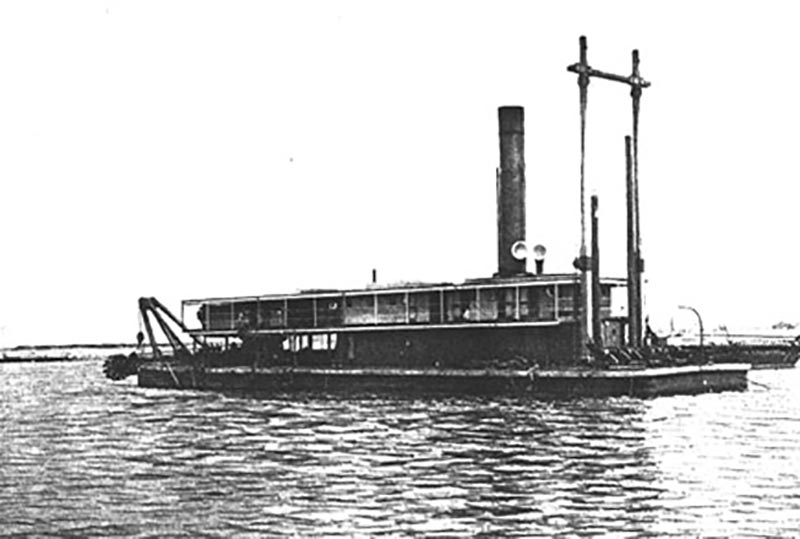
Shipbuilding began in about 1870, when the Department of Public Works, Harbours and Rivers Branch began the construction of tugs, barges and dredgers, work which continued into the twentieth century. By the time the Commonwealth took over the Dockyard in January 1913, about 146 vessels had been completed (surviving records are not sufficiently complete to determine the exact number). They included the first mild-steel ship to be built in Australia, the 56-ton tug Hinton, which was imported in parts from England and assembled at Cockatoo Island in 1886.
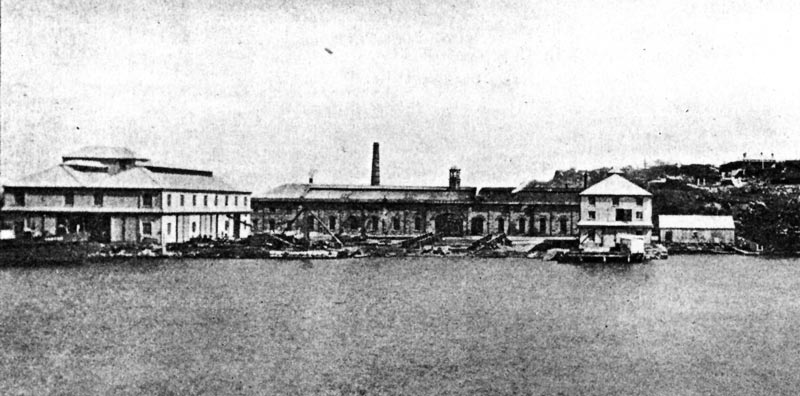
Most of the shipbuilding in the nineteenth century was carried out on the shoreline to the east of the Engineers Workshop (Building 138). This area continued to be used for shipbuilding until 1915, when a Tool Room was erected on the site of the last building ways.
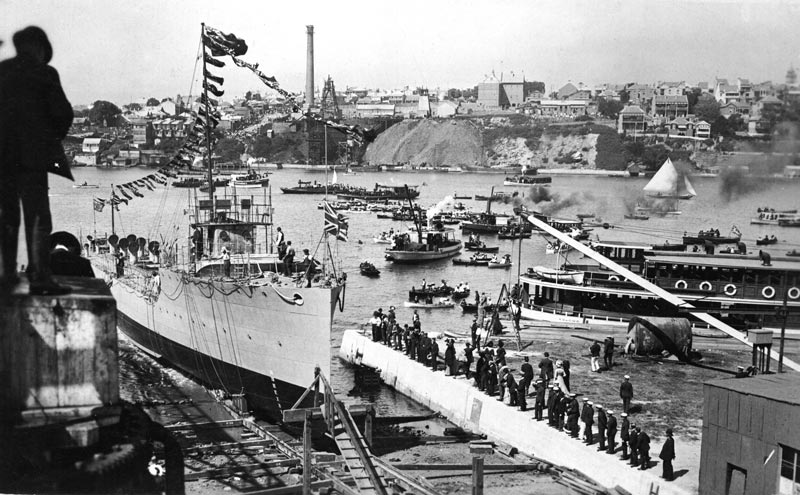
The larger ships which were built by the NSW Government at Cockatoo Island, like the dredgers Latona and John Stewart, were built on the new southern shipyard slipways, south of the Fitzroy Dock. It was here that the destroyer Warrego was assembled from parts imported from Scotland.

Warrego’s sisters Huon, Torrens and Swan were built during World War I. The southern shipyard was used again during World War II, but was unused for shipbuilding after 1946. The submarine weapons workshop was built on the site and remains there today.
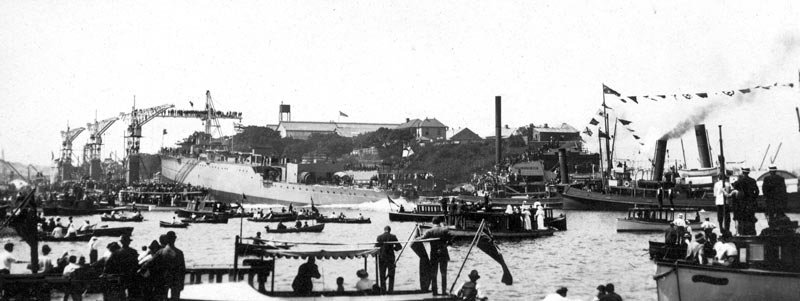
The NSW Government created the northern shipyard in 1912 to build the cruiser Brisbane for the Royal Australian Navy. The slipway (known as No. 1) was expanded and strengthened after the launch of Brisbane in 1915, and was the best slipway on Cockatoo Island. It continued to be used until 1984. Notable ships launched from No. 1 slipway included Australia’s first aircraft carrier, HMAS Albatross in 1928, the first all-welded warship built in Australia, HMAS Voyager, in 1952, the largest roll-on roll-off passenger ship built in the world at that time, Empress of Australia, in 1964 and the last ship (and largest warship yet built in Australia) the fleet underway replenishment ship, HMAS Success, in 1984.
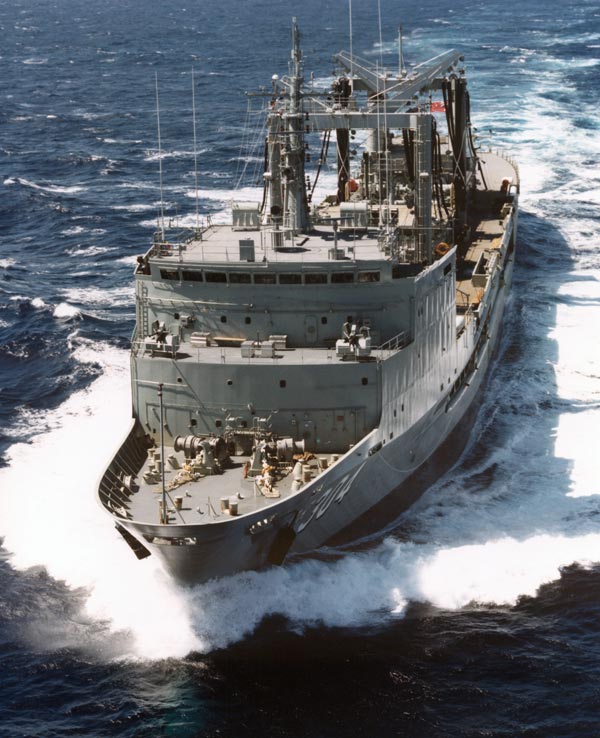
In 1938 the northern shipyard was expanded by the construction of another slipway which became known as No. 2. HMA ships Warrego, Warramunga and Bataan were built there during the World War II. It was strengthened and re-aligned in 1964 for the construction of HMAS Torrens, launched in 1968.
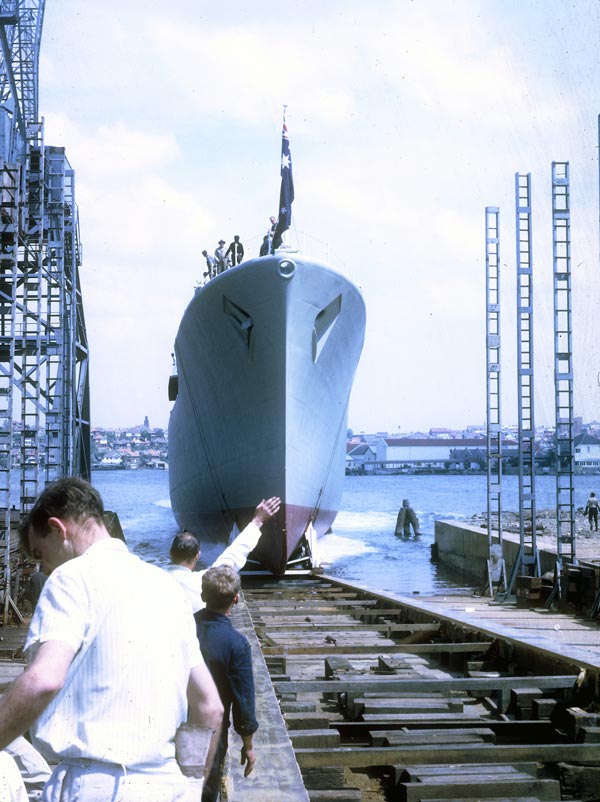
Ships were also built on a small slipway next to the Camber Wharf, the present site of the island’s roll-on roll-off ramp, and on No. 5 slipway south of the Sutherland Dock. The floating crane Titan was the last to be launched from that slipway, in 1917.
Cockatoo Dockyard also built many small craft for dockyard service, for ships built on the island, and lifeboats for merchant ships. The exact number is unknown.



